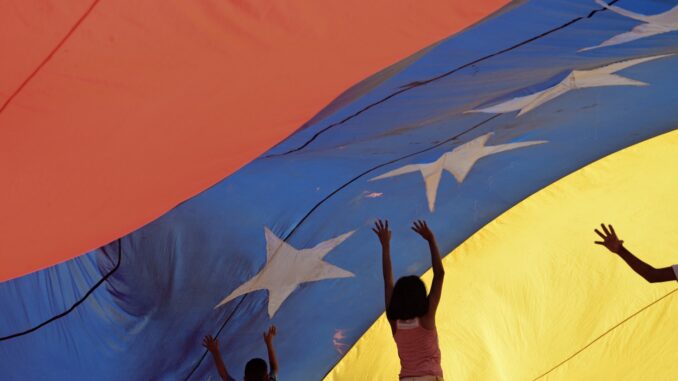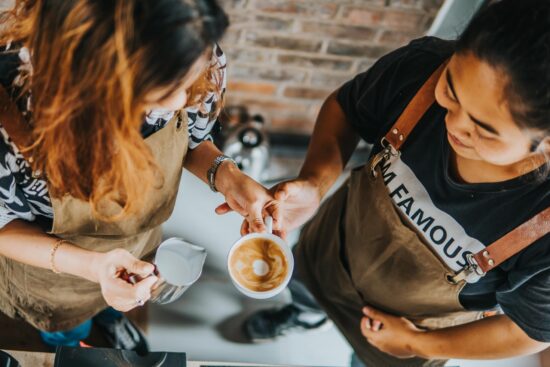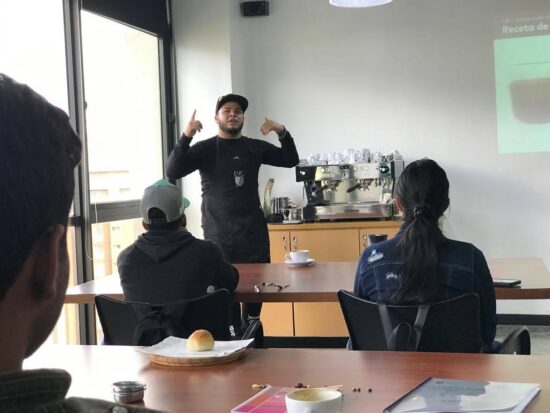
We explore how specialty coffee got its start in Venezuela, and how farmers are improving their harvest for local consumption.
BY YKER VALERIO
SPECIAL TO BARISTA MAGAZINE ONLINE
Cover photo by Ronal Labrador for Unsplash
Recently, we explored the rise of specialty coffee in Indonesia. Today, we look at Venezuelan coffee and how it transitioned to specialty growing, albeit in completely different ways.
Lately, Venezuelan coffee businesses have been strengthening the local coffee market. It’s the most sensible solution they have come up with after decades of crisis.
In Venezuela, coffee exports have been at their historical lowest, near-zero year after year, while production covers about 20% of the local market demand.
Venezuelan coffee professionals take risks to continue their trade to keep their businesses open. In their pursuit, they’re taking local coffee quality to higher levels while improving the café experience, customer service, and innovating across the entire supply chain from farm to cup.
From coffee producers to coffee trainers, the specialty-coffee movement is slowly growing. And these coffee pros aren’t aiming for the international coffee trade just yet. We spoke with several coffee entrepreneurs in Venezuela to gain insight into their work and understand where the industry got its roots.

The Traditional Drinking Culture of Venezuelan Coffee
Until the early 2010s, drinking espresso beverages was the most popular way to consume coffee in Venezuela. However, apart from a few exceptions, anyone with or without training would operate an espresso machine. Everyone would make coffee, from the business owner in a panadería (bakeries with espresso bars) to waitresses and cashiers in restaurants and hotels. It didn’t matter how exclusive the business was, because coffee-making wasn’t considered a skilled job.
The traditional coffee menu was also the same in any bakery, patisserie, or five-star hotel, consisting of the café con leche, marrón, and café negro.
In any coffee shop, customers would expect some variation of an espresso drink with frothy milk or hot water. However, concluding that the traditional menu is restricted to these three drinks doesn’t mean the menu is simple. On the contrary, Venezuelans can imagine infinite customizations for these three drinks, asking for more or less foam or milk.
At that time, few people knew about the role of the barista. The Italian-Venezuelan community had some small espresso bars, but most businesses knew little about barista training or coffee quality.
In other words, specialty-coffee standards were out of reach and largely uninteresting for the general public. Even Italian espresso traditions were widely unknown outside the Italian-Venezuelan community.

Accademia del Caffe and Escuela Venezolana del Café: The Start of Specialty
Eventually, Venezuelan coffee professional Pietro Carbone started one of the first barista schools in the country in 2009. Later called Accademia del Caffe, Pietro’s school started talking about the features of a good espresso, something that was all too peculiar to local coffee drinkers.
In 2011, Paramaconi Acosta opened the Venezuelan Coffee School (Escuela Venezolana del Café) after preparing for four years. Together, these two schools alone trained over 30,000 students in the last decade.
Currently, it’s hard to know how many Specialty Coffee Association certificates are in Venezuela or abroad. What we do know is that there are several thousand. Even during the pandemic, Gustavo Paparoni has certified hundreds of participants in Specialty Coffee Association standards, both virtually and by following strict safety standards for in-person classes.
But more important than the numbers is the impact this knowledge has had on the local coffee market.

Why Did Venezuelan Coffee Take the Specialty Route?
In the early 2010s, various regulations on coffee and agriculture made it hard to profit from these industries. In this scenario, many coffee producers and skilled workers left their farms because coffee was no longer profitable.
The only way to profit from coffee was to commercialize high-quality coffee. The government was more lenient with high-quality coffee, which allowed for better prices.
To some extent, selling high-quality coffee concurred with the emergence of a new type of coffee consumption. Paramaconi claims that the specialty-coffee movement started when hundreds of barista school graduates tasted coffee at restaurants and hotels with a new perspective. “Business owners started to call barista schools asking for help because they had customers asking for better coffee,” explains Paramaconi.
Similarly, Pietro says that consumers started to look at coffee bags differently after a few years of the opening of barista schools. According to Pietro, some consumers now check post-harvest processes, roasts, and origins, which was unthinkable 10 years ago.
Moreover, in the early 2010s, premium coffee shops barely existed in Venezuela. But when foodservice business owners noticed that coffee drink quality was threatening their reputations, they knew something was going on. Many early adopters of specialty coffee were café hoppers and trained baristas who hopped on when premium coffee shops started to rise.
Almost simultaneously, Venezuelan micro-roasters started to offer single-origin coffees from estates across the country. The latter, combined with the growing popularity of specialty-coffee training, brought a new coffee-drinking group to the Venezuelan market.
Raising the Bar: A New Culture of Service
It’s hard to know what happened first, even now after some time has passed. Saying that premium coffee growth in Venezuela has been consumer-led would be a bold statement. Many would agree that coffee businesses were looking for a profit in high-quality coffee, and it serendipitously concurred with the growing interest for specialty coffee among consumers.
The birth of a new clientele was evident after major coffee expositions, fairs, and competitions attracted thousands of participants in the Venezuelan cities of Caracas, Maracaibo, and Valencia. Before Maracaibo and Valencia suffered from severe and sustained power outages, coffee shops were growing steadily. At some point, Maracaibo had dozens of coffee shops serving single-origin coffee with different brewing methods available.
Now that this new coffee drinker is present, a new culture of service is finding its way. Far from the popular espresso bars at the panaderias, the premium coffee shop concept has put on the table an increasing demand for high-quality coffee. And with it, there is the necessity to debate and re-litigate an increasingly complex question: What is specialty coffee? And, even more, who is producing at such standards?
In the next article in this series, we’ll uncover how Venezuelan coffee producers have overcome challenge after challenge to innovate and improve.
ABOUT THE AUTHOR
Yker Valerio (he/him) is a freelance content creator. After more than 10 years of working as a management consultant, he started the blog Bon Vivant Caffè to share his passion for specialty coffee.

